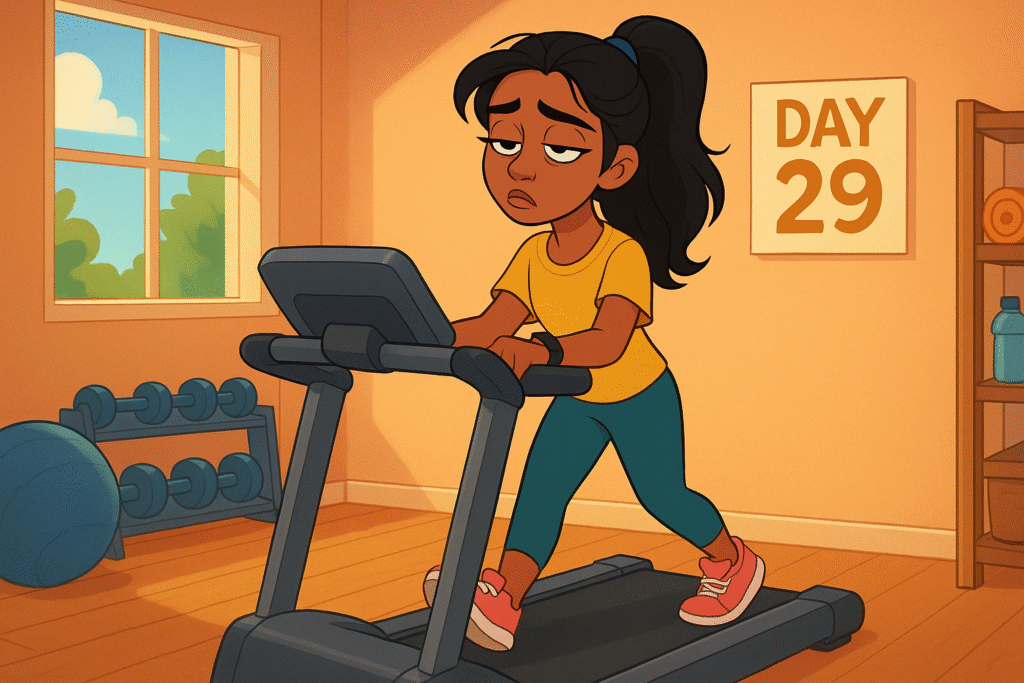
A post by neuroscientist and podcaster Andrew Huberman has been living in my head for weeks.
It challenges everything we thought we knew about habit formation.
Remember that old wisdom about “it takes 28 days to form a new habit”?
Yeah, well … turns out that’s a completely arbitrary number.
The reality is way more interesting:
Neural circuits can rewire in just one trial (think psychological trauma) or might require 10,000 repetitions.
What determines the difference?
According to Huberman, it’s the “state shift” in your brain and body that occurs during the experience.
The key players here are catecholamines — dopamine, epinephrine, and norepinephrine. These chemicals are powerful “state-shifters” that rewire our neural pathways much faster than repetition alone.
Think about something traumatic that happened to YOU.
One single incident, and you likely formed an immediate, powerful aversion. That’s one-trial learning, driven by a massive catecholamine surge.
On the flip side, think about something you’ve done hundreds of times without it becoming automatic. That’s because there wasn’t enough of a state shift to cement the neural pathway.
This creates a weird paradox for anyone trying to build new habits or change behaviors.
The ideal scenario, then?
When the thing you want to learn naturally excites you, creating its own chemical reward.
But sadly, most adult learning is NOT inherently thrilling.
Instead, it requires self-directed focus and overcoming resistance — what Huberman calls “friction.”
Here’s where it gets interesting: This friction isn’t a mere obstacle to overcome like the way we use the term in marketing.
It’s actually essential for rewiring our brains. The effort required to push through resistance can itself trigger the catecholamine release needed for faster learning.
The real learning comes from how much it sucks to be you when you’re doing the work.
In I Need That, I get into how the “dog brain” (our emotional, reward-seeking limbic system) drives behavior way more powerfully than our rational “tank brain.” This perfectly aligns with Huberman’s findings.
When trying to establish a new habit, you basically have two options:
- Rely on pure repetition — hammering away for weeks or months, hoping the behavior eventually sticks.
- OR create conditions that generate a powerful state shift — triggering the chemistry that makes your brain say, “Dude, I need that.”
The most successful products understand this instinctively. They create emotional shifts that rewire neural pathways quickly and durably.
Product Payoff: I love how effectively Duolingo applied this principle to language learning — traditionally a high-friction (not much fun) activity. By gamifying the process with streak counters, competitive leaderboards, and character animations that trigger emotional responses, they create artificial dopamine hits to reward the learning process.
This state-shifting approach helps explain how Duo has retained over 110 million monthly active users in a category where most competitors stare at 90%+ abandonment rates within weeks.
Action for today: Think about a behavior change you’ve been struggling to adopt.
Instead of focusing on reps, ask: “How can I create a stronger state shift when performing this behavior?” This might involve adding music, gamification, social accountability, or timing the activity to coincide with natural energy peaks.
The goal is to manufacture the chemical conditions that accelerate neural rewiring.
Have you experienced rapid habit formation after associating a behavior with strong emotional rewards?
Or struggled with a habit despite weeks of consistency? Tap that reply arrow and share your experience with neural plasticity in action.
Or reach out to my amazing team of product marketing specialists at Graphos Product.
